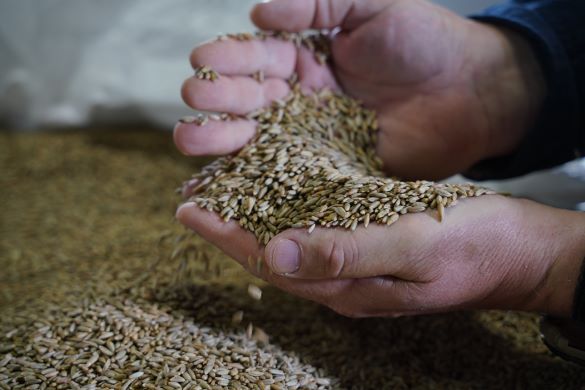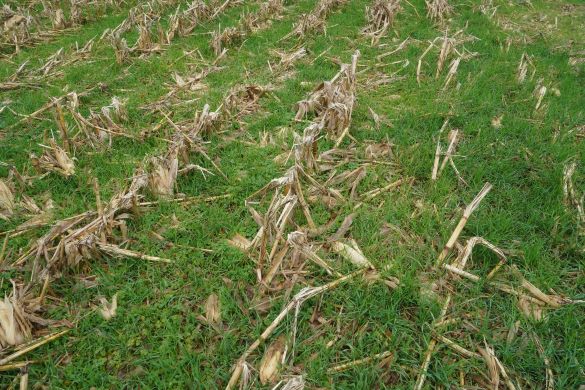
 Department of Conservation and Recreation
Department of Conservation and Recreation
Conserve. Protect. Enjoy.
 Department of Conservation and Recreation
Department of Conservation and Recreation
By Matt SabasPosted September 24, 2024
This article was originally featured in the Small Farm Outreach Program (SFOP) Summer 2024 Quarterly newsletter published by the Cooperative Extension at Virginia State University.

Pictured: Rye and clover seed for cover crops.
Soil is at the heart of a crop producer’s livelihood. The incorporation of cover crops can be a powerful tool for enhancing soil health and farm resilience. For farmers in Virginia, the Virginia Agricultural Best Management Practices Cost-Share Program (VACS), administered by the Virginia Department of Conservation and Recreation and carried out by local Soil and Water Conservation Districts, can decrease the cost of planting cover crops on your farm while boosting your bottom line.
Cover crops are non-cash crops planted between primary crops, providing continuous cover of soil year-round. This protects topsoil by creating a natural barrier that prevents erosion from wind and rain. By increasing soil’s ability to hold moisture, it improves your farm’s drought resistance while suppressing weeds, pests and soil compaction.
Benefits of Cover Crops
Not only do cover crops reduce soil erosion and out-compete weeds, but they also pack a powerful punch in terms of improving soil health on the farm. They scavenge and store nutrients from previous crops and release those nutrients to the next harvestable commodity, which can benefit the farmer's yield right away.
Integrating cover crops into your rotation can make your farm more sustainable in several ways. A system of continuous, year-round cover reduces nonpoint source pollution by slowing runoff and absorbing excess nitrogen that otherwise would leach into the water table. By holding nutrients and nitrogen in the soil, cover crops can potentially reduce-the need for synthetic fertilizer. They can also enhance biodiversity by providing a habitat for beneficial insects and pollinators.

Pictured: Continuous cover crops.
Funding & Technical Assistance Opportunities for Virginia Farmers
Selecting the ideal cover crop for crop rotation and planting it at the optimal time—often in early fall— to reap the best economic and environmental benefits is important.
To help you get started, funds and resources are available through the Virginia Agricultural Best Management Practices Cost-Share Program (VACS). By providing farmers access to financial and technical assistance through your local Soil and Water Conservation District, VACS helps offset the costs associated with implementing cover crops and over 70 other conservation practices.
For advice on the best cover crops and conservation practices for your farm and to identify other programs for which you might be eligible, contact your local Soil and Water Conservation District at https://www.dcr.virginia.gov/soil-and-water/swcds.
The Small Farm Outreach Program (SFOP), a part of Cooperative Extension at Virginia State University, educates and empowers small, limited-resource, socially disadvantaged and veteran farmers and ranchers to own, operate and sustain farms and ranches independently with agricultural training programs that improve farm management skills and quality of life. Reach out to the Virginia Small Farm Outreach Program directly at (804) 524-3292 or smallfarm@vsu.edu.
Categories
Soil and Water Conservation

